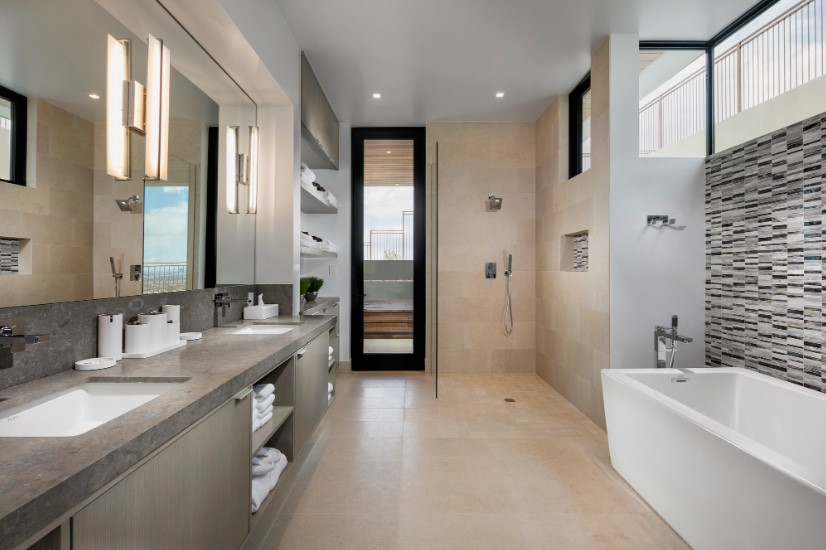If you’re planning to start a fashion eCommerce website, you should know that there are many things you should do to stay in the competition. One of which is to ensure that all elements needed to create an ideal fashion eCommerce website are present. Of course, if you’re not familiar with creating a website, you can always hire a fashion eCommerce agency to help you get started.
In this article, we’ll explore the various elements you need to become a successful fashion brand.
1. Visually Appealing Design
The first thing that potential customers see when they access your website is the design. It can significantly affect their decision-making about whether they should keep on looking at your website.
As mentioned, if you’re not a professional web developer, hiring a fashion eCommerce agency is the best option.
2. High-Quality Product Images
Aside from the design, the photos are also noticeable, especially since you’re selling products that can only be seen through photos. When doing so, you can hire a professional photographer. However, if you can’t afford one yet, you can learn DIY product photography online, by watching videos and reading blogs.
3. Mobile-Friendly Design
Your website should have a mobile-friendly design. Before, it was just an option, given that most customers use a desktop or laptop when shopping. However, nowadays, mobile apps and mobile-friendly websites are common in online shops are common, so you should keep this in mind to create a smoother shopping experience for your customers.
4. Easy Navigation and Search Functionality
An ideal fashion eCommerce website should be easy to navigate and have exceptional search functionality. In terms of navigation, there should be enough categories on the homepage, where customers can easily access various choices. For instance, if you’re the main audience is women, your categories should include tops, dresses, pants, shorts, skirts, and accessories.
5. Detailed Product Descriptions
Aside from high-quality photos, you should also ensure that the product descriptions are detailed and clear. These should include the material (like fabric), size, exact measurements, colours, and other necessary options. Meanwhile, when providing a size chart, it should include various options, like the UK, the US, and Europe.

6. Customer Reviews and Ratings
Allow customer ratings and reviews on your website to improve credibility, and gather real thoughts that can help you provide better products and services. For instance, if a customer complains about the shipping time, you can improve this by shipping future orders as soon as possible. As for the ratings, you can attract more customers, especially if the average rating is high.
7. Seamless Checkout Process
Checking out doesn’t have to be complicated. If it is, there’s a high chance that your potential customers will abandon the products in their cart and never return.
Instead, the checkout process should just take a few clicks. First, the offer includes the shipping fee, taxes, and payment options. Once they select their preferences, they should be directed to a page where they can review the details (such as name, address, and contact details), and click finalise order or place order once they confirm the details.
8. Secure Payment Options
Customers should feel safe when using their cards and other payment options on your website. You can avail of antivirus and cyber liability insurance. In addition, you should have a strong password, and a secure internet connection, so hackers won’t be able to steal any information from your system.
9. Fast Page Loading Speed
Nowadays, websites are a lot faster than before. So if your website can’t keep up with the others, you might lose potential customers. Each page should load instantly, given that the internet connection is strong. So, if you want to achieve a faster loading time, you should compress the photos, avoid using large files, and allow browser caches.
10. Personalisation and Recommendations
Instead of mannequins, customers should see models wearing a complete outfit from your shop. In addition, you can add recommendations based on their previous purchases, or even based on their previous searches and the products in their cart. As for personalisation, you can offer discounts, and other promos based on the algorithm of their account.

11. Strong Branding
When creating strong branding, your website should be consistent, including the posts and content you share on social media platforms. In addition, you should have a catchy brand name, logo, and type of voice in presenting and describing your products.
12. User-generated Content and Social Integration
Allow users to share photos of themselves wearing the products from your shop. You can encourage them to use hashtags and essential keywords so that you can reach a wider audience.
13. Clear Shipping and Return Policies
Creating a clear shipping and return policy is a must, and it should always be included on the checkout page and FAQs so that they can easily access them before ordering. You can also offer free shipping and seamless returns as a competitive edge.
14. Effective SEO Strategy
Working on an effective SEO strategy can also help boost your reach. Besides, no matter how ideal your fashion eCommerce website is, if it doesn’t appear in search engines, you won’t achieve your target reach and sales.
15. Customer Support
Your website should always have constant support for customers. As one of the most essential features, you shouldn’t forget to include a customer support element that can answer all their questions and enquiries.
Final Thoughts
A successful fashion eCommerce website is more than the products you offer. By offering a smooth shopping experience, you can gain more customers, including loyal ones.
If you want to share your thoughts about this, don’t hesitate to leave a comment below!



